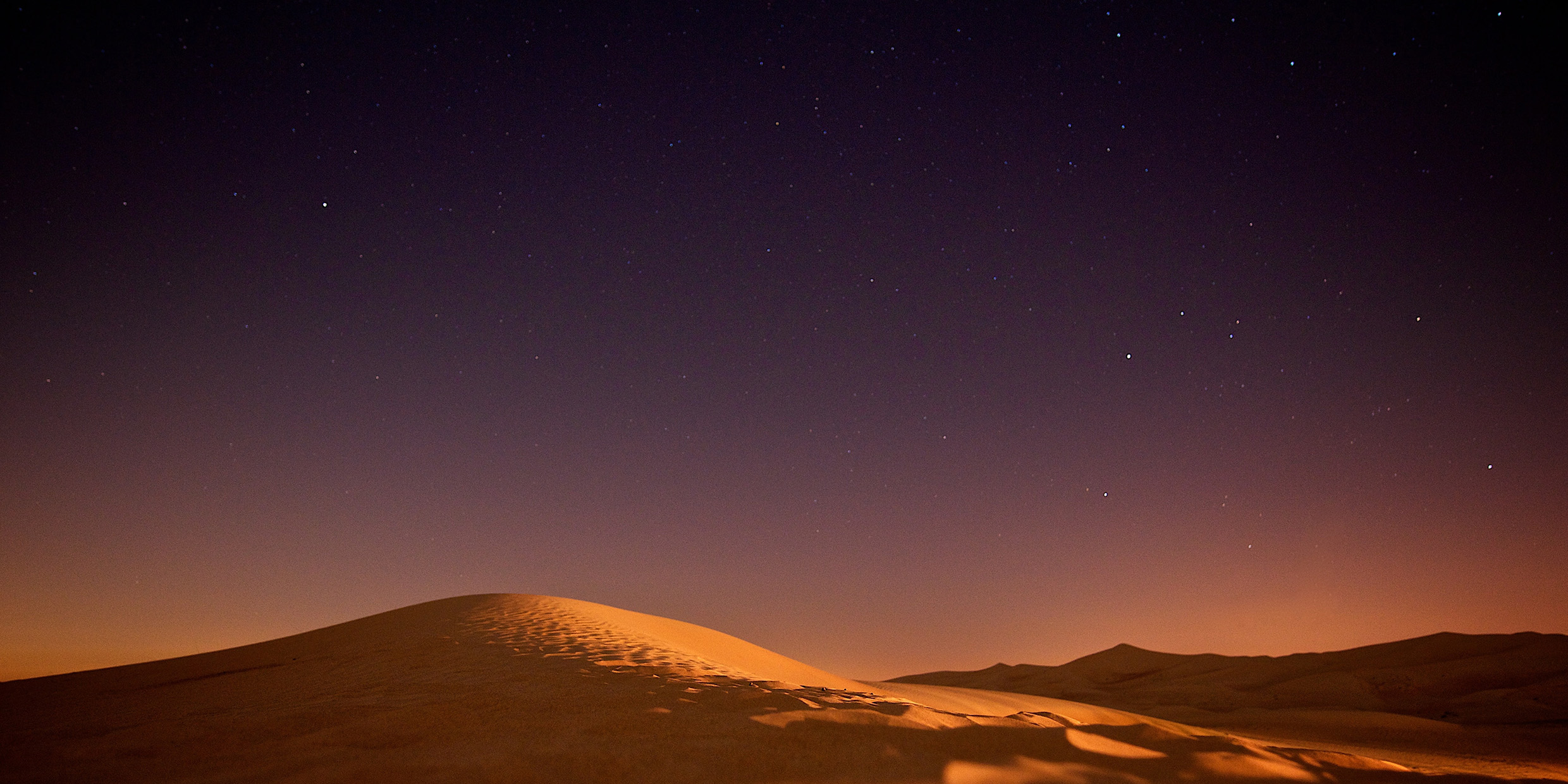Originally published 25 December 1989
Forget for the moment that the actual year of Christ’s birth was probably sometime between 7 BC, when Augustus ordered a census of Judea, and 4 BC, when Herod died. Forget that the season of birth may have been spring, when shepherds watched their newborn lambs by night. Let’s focus on the traditional place and time, Bethlehem in Galilee, on the night of December 24 – 25 in the year 1 BC (as historians reckon).
A computer and some helpful software can reconstruct what the shepherds saw as they sat with their flocks in the hills above the town.
The night is bright. A waxing gibbous moon stands near the Pleiades in the constellation Taurus. Saturn is in Gemini, and Venus is the evening star. As the long night progresses, the moon moves with spangled winter constellations to its western setting several hours before sunrise. As the moon sinks below the horizon, Jupiter rises in the east with the stars of Virgo. The sky grows bright. It is the first Christmas morning.
I will leave it to others to add the angels to this celestial scene, but their purported message is real enough to anyone who contemplates the night sky: Peace on Earth, good will to men.
Christmas and Chanukah are celebrations of light, rooted in the natural symbolism of the solstitial sun that now begins its journey back into the northern sky, taking us out of winter darkness.
Follow back in time the thread that is science and the thread that is religion and sooner or later they will come together in the night sky. The stars evoke a sense of wonder that cannot fail to excite the imagination. To recapture that primitive sense of wonder, let’s look at night from another place.

In the drawing, I have illustrated the night sky as it would appear from a planet in the star system Alpha Centauri. So that the view will not go unnoticed, I have placed Centaurian observer at the entrance of her shelter. Let us imagine that evolution has brought our little E.T. to the threshold of reflective intelligence — to the point our human ancestors reached, say, 40,000 years ago, at the dawn of science and religion.
Both Centaurian suns have set, the yellow sun and the orange sun. The night is dark and ablaze with stars. The Milky Way drapes across the sky like a sash of pale light. The W‑shaped group of five stars at the lower right of our view is the constellation known on Earth as Cassiopeia. At the upper left is the beautiful yellow star earthlings call Capella.
Between Cassiopeia and Capella, almost centered in the view from the mouth of the cave, is another yellow star, almost the twin of Capella, a star that has never been seen in the nighttime sky of Earth. It is the Earth’s daytime star. It is the sun.
At the distance of Alpha Centauri — 4.3 light-years — the sun is just one more nighttime spark of light. It is not even the brightest star in the Centaurian night. It floats in the stream of the Milky Way, one of hundreds of billions of stars in that spiral galaxy. The planet Earth has shrunk to invisibility, an imperceptible dot of light absorbed in the sun’s greater glare. Perhaps our extraterrestrial wonders if out there in the immensity of space there are other intelligences like her own. Perhaps she wonders if she alone imbues the universe with consciousness and life.
No moment on any planet anywhere in the universe can be more special than the moment of first life. On Earth that special moment happened nearly 4 billion years ago, not long after the formation of the planet itself. Perhaps life happened here as a freak accident, a once-in-a-universe chance arrangement of organic molecules, the roll of a die with a thousand billion faces. If that is so, then there is no Centaurian at the mouth of a cave near that other star and we are alone in the immensity of the galaxy.
Or maybe life is inevitable. Maybe it is built into the very stuff of nature, singing at the heart of matter as a potential waiting to be realized, waiting for the right place and right time to spring into existence. Then, somewhere near another star, another creature watches by night and wonders. Another creature looks into the night and hears the message invariably evoked by the deep and spangled darkness: Peace, good will.



